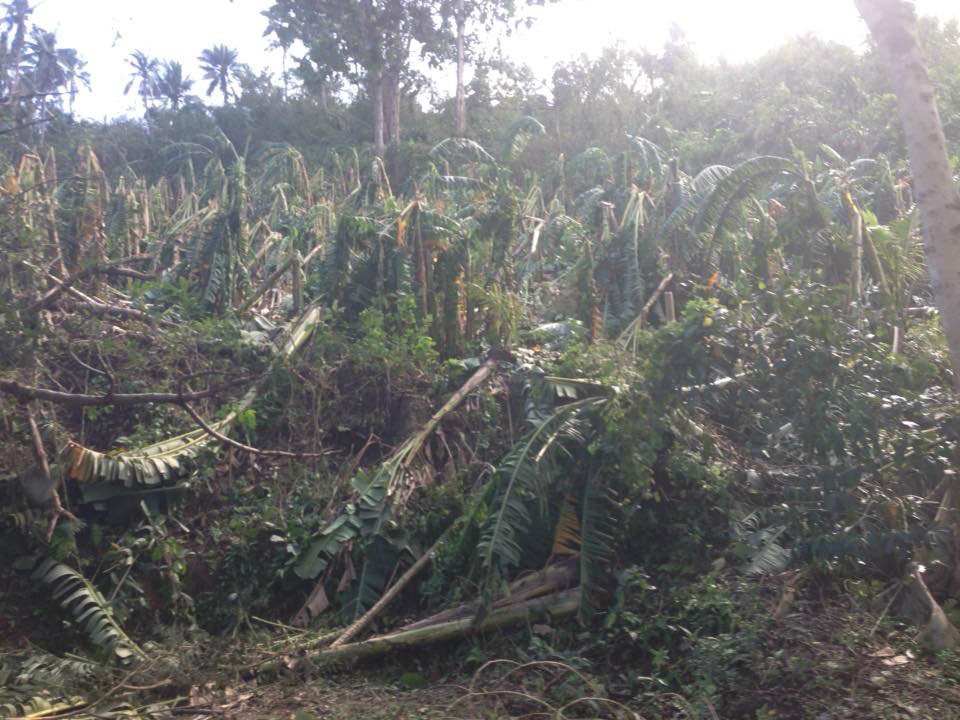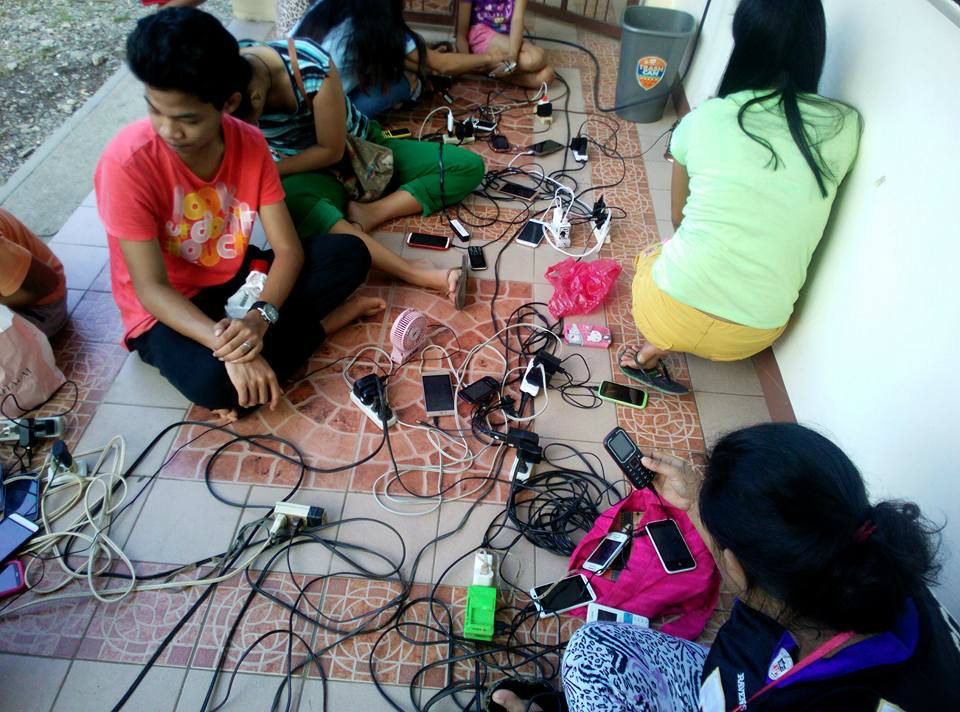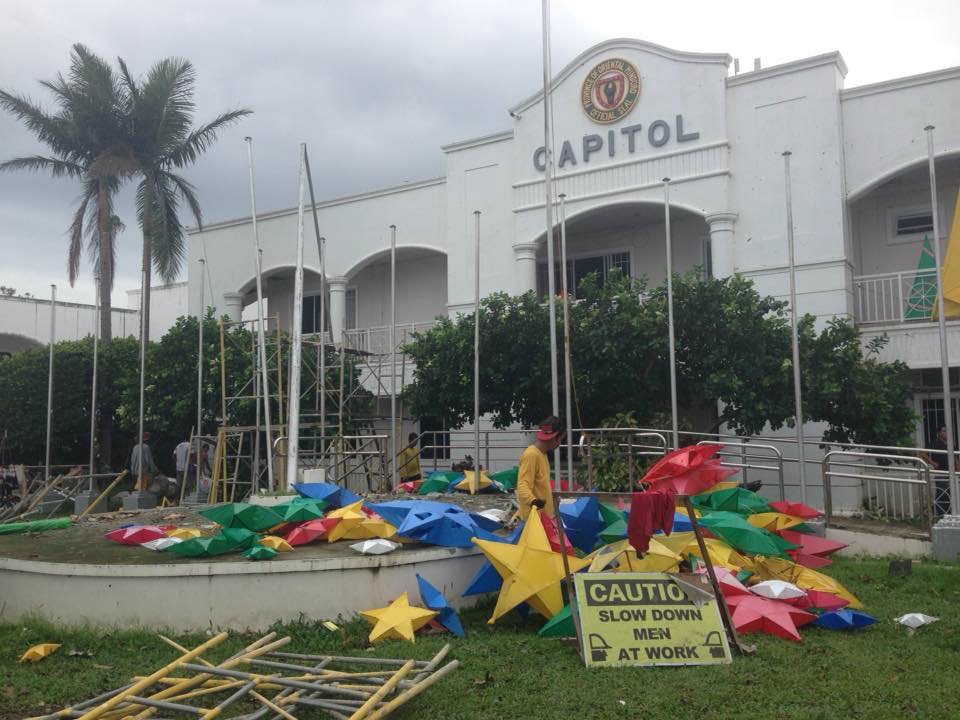SUMMARY
This is AI generated summarization, which may have errors. For context, always refer to the full article.

ORIENTAL MINDORO, Philippines – Calapan City resident Gloria Dapito always checks her backyard filled with fruit-laden banana trees every morning. The 74-year-old was expecting a final good harvest before the end of the year but Typhoon Nina (Nock-ten) dashed her hopes when it hit Oriental Mindoro a day after Christmas.
“I really thought I could sell those fruits and have extra income this holiday season. But everthing’s gone. Even our kitchen was partially destroyed by that storm. There’s nothing I can do about it at this moment,” said Dapito.
According to the National Irrigation Administration (NIA), Nina destroyed at least P25.14 million ($505,241) worth of crops across 3 regions.
In Oriental Mindoro, the extent of the damage prompted the provincial council of Oriental Mindoro to declare the city of Calapan; the towns of San Teodoro, Naujan, Baco, Puerto Galera; and some coastal areas in Pola under a state of calamity.
Although assessment of the damage is still being finalized, the declaration was made to speed up the release and utilization of calamity funds.
At least 27,085 families or 116,154 people in 395 barangays have been affected by Nina, according to the Department of Social Welfare and Development.
As of posting, a majority of Oriental Mindoro’s towns still have no electricity. A few selected areas in the capital, Calapan City, have intermittent power supply. There are designated evacuation centers in every municipality, equipped with rescue equipment, generators, and charging stations for mobile phones.

Marissa Santos, 15, is among those at the charging stations. Despite the very long line, she was determined to charge her gadget.
“Communication is very important especially during these times of disasters. That is why I am here to charge my old mobile phone which got wet during the typhoon,” Santos said.
There are 6 confirmed casualties in the aftermath of Nina, two in Oriental Mindoro.
Damage report of the province
Harold Laudencia, a registered nurse of the Department of Health (DOH) who usually gets deployed for the agency’s program implementations, described the typhoon’s aftermath.
“I was awestruck when I saw the wooden shed in front of our health center destroyed. That shed was frequently used by local officials during meetings and gatherings. Even the vegetable garden beside the shed was devastated, with all the vegetables gone,” said Harold.
Based on initial data from the Provincial Social Welfare and Development Office, as of December 28, the estimated value of infrastructure damage in the province is at P170 million; the total agricultural damage is around P700 million for
In Oriental Mindoro alone, around 5,000 hectares of rice fields with an estimated value of P80 million were affected.

Damage to high value crops like banana, calamansi, rambutan, and lanzones are estimated at P310 million, while agrifishery and livestock losses are at P1 million. As of posting, there was no available data for damage to coconut plantations.
Heavily-affected Puerto Galera
Puerto Galera, known for its pristine beaches, is the area that was most heavily affected by the typhoon. The town’s famous zigzag road along the mountain has been blocked by landslides and uprooted trees.
One of the confirmed typhoon casualties in the province is from Barangay Villaflor in Puerto Galera. The unidentified victim is said to be a member of the Mangyan community. At the town’s capitol, sacks and repacked plastic bags of relief goods are awaiting distribution to affected locals.
“All of Puerto Galera’s 13 barangays have damaged houses, and 7 from those barangays were affected by floods. Most houses destroyed during the typhoon were made of light materials,” according toRodrigo Manongsong, MDRRMC Calapan Action Officer.
Barangay Palangan in Puerto Galera was the most affected. Damage to its breakwater is estimated at around P350,000. Damage to street lights is pegged at P150,000.
Approximately 24 hectares of banana, 15 hectares of coconut, and 3 hectares of assorted vegetables plantations in Puerto Galera alone were damaged by the typhoon.
Maritime mishaps, damaged coral reefs
The surge of people entering the province for the holidays combined with the mishaps and delays of shipping lines have caused heavy traffic congestion in the island for several days.
It was initially reported that two roll-on-roll-off (Roro) vessels sank at the height of the typhoon on the same day.
The M/V Shuttle Roro 5 first sank off the coast of Mabini, Batangas, on Monday morning, December 26, followed by the M/V Starlite Atlantic off Batangas Bay on Monday, December 26. Eighteen of the latter’s crewmembers remain missing.
Manongsong also confirmed that 7 passenger ships (Baleno 5, 7, 8, OceanJet 12, OceanJet 10, Starlite Polaris, and Starlite Blue Sea) ran aground near Puerto Galera, destroying coral reefs. He said that the Bureau of Fisheries and Aquatic Resources (BFAR) Regional Director is set to inspect the damaged coral reefs.
According to MDRRMC/Bantay-Dagat’s Typhoon Damage Report, the destroyed coral reefs were part of the Puerto Galera Marine Protected Area. Around 695 hectares of corals were reportedly damaged.
The typhoon inflicted casualties, damage to agriculture and infrastructure, and left many people in the province still without electricity as they prepared to welcome the new year. But residents like Gigi Sagdang, an administration assistant at the Provincial Capitol’s Human Resource Management office, believes the province can recover from the devastation.
Sagdang is among the people of Oriental Mindoro who remain optimistic despite the situation in the province that would make one feel otherwise. She wants her fellow Mindorenos to demonstrate their resilience in the aftermath of the typhoon.
“I suppose we just need to pray and trust God. Although we didn’t expect that typhoon Nina would hit us this hard, I believe that we all can overcome these obstacles if we just believe that we have to fight to make our lives normal again,” said Sagdang. – Rappler.com
Enrico Belga Jr is a Rappler intern. He is also a journalism major at Centro Escolar University Manila.
Add a comment
How does this make you feel?
There are no comments yet. Add your comment to start the conversation.